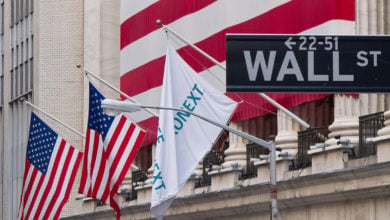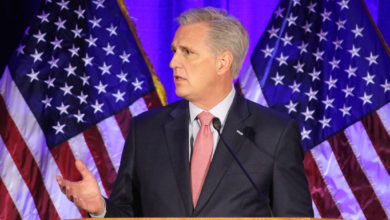The “free enterprise” system. Its glories are touted by pundits and professors from coast to coast.
Many states require passing a course on free enterprise in order to graduate from high school. At the college level, students in free enterprise hold an annual national competition. Pennsylvania has an official “Free Enterprise Week.” The free enterprise Forum in Charlottesville, Va. holds an annual scholarship essay contest for high schoolers. A Green Bay, Wis. school even sponsors an annual “Free Enterprise Fun Fair,” for 4th and 5th graders. And so on.
“Free enterprise” is kind of the unofficial national religion.
The thing is, “free enterprise” is pretty much a myth. It’s a nice theme for political rallies, propagandizing students and the population in general. But it’s like what recently deceased real estate multi-millionaire Leona Helmsley notoriously said about taxes a few years back: they’re for “the little people.” So, too, is “free enterprise.”
Those who are not wealthy have to take their economic chances and often wind up losing homes, cars, pensions and small businesses in the world of the “free market.”
The vast majority of working class people, who are the vast majority of society, have little or no chance of successfully going into business for themselves. The much-heralded “sanctity of private property” is really a joke for most people who will never have any.
Private property—as opposed to personal property, like a house, car or toothbrush—is property that produces wealth. Most workers can only live by selling their ability to work.
Three-quarters of small businesses fail within five years, most because, as the saying goes, “it takes money to make money.” Most people do not have much unless they inherited it.
Smaller government?
As the latest tremors rocking the financial markets have shown once again, the rich—many of whom did inherit it—do not play by the same rules as the rest of us.
In good times, the big banks, corporations and stock traders and their corporate media mouthpieces relentlessly repeat the dual mantras of “let the market work” and “get government off our back.”
When the economy is booming and the profits are pouring in they’re rugged individualists, bravely charging ahead, in need of help from no person or institution. They have nothing but contempt for anyone who has to seek government assistance due to being laid-off or driven into foreclosure because of a health crisis.
But under capitalism, every expansionary boom is followed by a bust, by an economic downturn in the form of a recession or depression. And when the economy busts, as it inevitably must, those same rugged, go-it-alone, capitalist entrepreneurs are the first ones in line for a government bail-out.
And they’re not looking for a few hundred or a few thousand bucks to tide them over. No, the relief they’re seeking is counted in hundreds of millions or billions of dollars. More often than not—especially if they represent the really huge corporate and banking interests—they get it.
In other words, what “free enterprise” means to the multi-billion dollar financial interests that dominate today’s economy is this: they should be able to take the wildest risks in order to maximize their profits, but if their frenzy leads to disaster—as we are presently witnessing in the housing market—the government (taxpayers) must save them.
Had the Federal Reserve, the national central bank of the United States, not intervened to rescue them in August and September 2007, more of the home mortgage lending companies and possibly some of the biggest banks in the country, could have collapsed, sending the economy into a deep depression.
Not coincidentally, words like “get government off our backs” have dramatically disappeared from the vocabularies of corporate TV pundits during the same period.
There is no guarantee that pumping of hundreds of billions of dollars into the economy by the Federal Reserve and the central banks of other capitalist countries will prevent a severe economic contraction. At the same time, there is no doubt that without massive government intervention, the world of capitalist finance would have been engulfed in panic this summer.
This is not the first time that government intervention has staved off economic collapse since World War II.
Corporate bail-outs
Twenty years ago this month, on Oct. 19, 1987, the stock market had its worst one-day crash in history, with stocks dropping more than 20 percent. The market was effectively dead. There were no buyers. The capitalist economy was threatened with a 1929-style depression.
Alan Greenspan had only been chairman of the Federal Reserve Board for two months, and despite being a self-styled “libertarian Republican,” he oversaw a massive and unprecedented rescue operation. Not over a period of weeks or months, but overnight, billions of dollars were pumped into banks and investment houses to buy stocks and revive the market.
What a contrast to the federal government’s response to the Hurricane Katrina disaster, where 25 months later, large sections of New Orleans—particularly the predominantly African American Lower Ninth Ward—remain virtually untouched and unrepaired.
Greenspan explained his action at the time with this revealing statement: “The Federal Reserve, consistent with its responsibilities as the nation’s central banker, affirmed today its readiness to serve as a source of liquidity to support the economic and financial system.” Years later, he added: “It wasn’t a question of whether you would open up the taps or not open up the taps. It was merely how you would do it, not if.”
Not only the “libertarian Republican” Greenspan, but also Democrats like former President Bill Clinton, have built careers on the supposed need for “smaller government.” (This supposed “smaller is better” philosophy on the part of most liberals and conservatives never applies to the military.)
Greenspan has long advocated slashing social programs. And a key part of Clinton’s platform when he first ran for president in 1992 was a pledge to “end welfare as we know it.” That is welfare, food stamps, and other benefits for poor people, not the gigantic government subsidies to businesses known as corporate welfare or tax shelters.
Clinton did not have to renew that pledge when he ran for reelection in 1996, because he and the Republican majority in Congress had together succeeded in eliminating or gutting most social welfare programs the year before. Both Clinton and Republican leaders like Newt Gingrich prattled on about the “moral dangers” of a “culture of dependency.”
But when it comes to giving billions more to the multi-billion dollar banks, it is no problem. This is not just perpetuated by Greenspan and his successor, Ben Berhnanke; most of ruling establishment regardless of political party has supported the huge bailouts.
Most of those in the relatively small section of the establishment that opposes corporate bail-outs fear that they will lead to a greater and deeper crisis further down the road. Their fears are well grounded. But for the typical corporate CEO, what matters is this year’s bottom line.
The latest bailout reaffirms that far from “free enterprise,” what we live under today is a system of state monopoly capitalism.
Despite the vast accumulation of wealth at the top—unlike anything seen in history—the capitalist system today is more reliant upon the government and the state than ever. It is inherently unstable and increasingly destructive.
The need to replace it with a sustainable system based on meeting people’s needs—a socialist system—becomes more urgent with each passing day.






